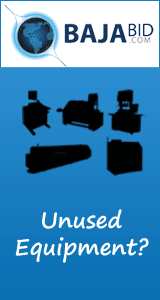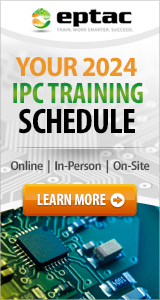Printed Circuit Board Assembly & PCB Design Forum
SMT electronics assembly manufacturing forum.
- SMTnet
- »
- Electronics Forum
- »
- AOI
AOI
![]()
![]() I've just come back from Nepcon West and I'm just as confu...
- Apr 14, 1999
by
joe devaney
I've just come back from Nepcon West and I'm just as confu...
- Apr 14, 1999
by
joe devaney
![]()
![]()
![]() | I've just come back from Nepcon West and I'm just as con...
- Apr 14, 1999
by
Boca
| I've just come back from Nepcon West and I'm just as con...
- Apr 14, 1999
by
Boca
![]()
![]()
![]() | | I've just come back from Nepcon West and I'm just as c...
- Apr 14, 1999
by
Boca
| | I've just come back from Nepcon West and I'm just as c...
- Apr 14, 1999
by
Boca
![]()
![]()
![]() | I've just come back from Nepcon West and I'm just as con...
- Apr 14, 1999
by
davef
| I've just come back from Nepcon West and I'm just as con...
- Apr 14, 1999
by
davef
![]()
![]()
![]() I had someone suggest that they weren't really necessary a...
- Apr 15, 1999
by
Nancy V
I had someone suggest that they weren't really necessary a...
- Apr 15, 1999
by
Nancy V
![]()
![]()
![]() | I've just come back from Nepcon West and I'm just as con...
- Apr 16, 1999
by
| I've just come back from Nepcon West and I'm just as con...
- Apr 16, 1999
by
![]()
![]() | I had someone suggest that they weren't really necessary...
- Apr 20, 1999
by
Scott Davies
| I had someone suggest that they weren't really necessary...
- Apr 20, 1999
by
Scott Davies
![]()
![]()
![]() | | I had someone suggest that they weren't really necessa...
- Apr 21, 1999
by
| | I had someone suggest that they weren't really necessa...
- Apr 21, 1999
by
![]()
![]() | | We purchased a VT-8000 system from Orbotech about 9 mo...
- Apr 21, 1999
by
davef
| | We purchased a VT-8000 system from Orbotech about 9 mo...
- Apr 21, 1999
by
davef
![]()
![]()
![]() | | I had someone suggest that they weren't really necessa...
- Apr 22, 1999
by
Boca
| | I had someone suggest that they weren't really necessa...
- Apr 22, 1999
by
Boca
![]()
- SMTnet
- »
- Electronics Forum
- »
- AOI







